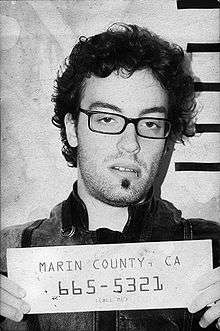Liar's Rosebush
Liar's Rosebush is the performing name of highly eclectic Canadian electronic musician Matt Rosen. Rosen has incorporated a wide range of stylistic elements over the project's eight-year history. Early self-released material such as 2002's November ep drew directly from the rhythmic noise and industrial influences of Rosen's youth. These influences were central to his first label release, 2003's None Higher (Immanence UK), a CD-R album which combined the noise aesthetic with a hip-hop and drum'n'bass sensibility.
Liar's Rosebush | |
|---|---|
 Matt Rosen of Liar's Rosebush | |
| Background information | |
| Also known as | Rosebush |
| Origin | Canada |
| Genres | Breakbeat Drum n bass Electro IDM Breakcore Industrial |
| Years active | 1999 – present |
| Labels | Hive Records Livevil Records Meat Parade Collective |
| Members | Matt Rosen |
Following his label debut, Rosen focused on live performance and collaboration, performing regularly in the Northeastern United States with American industrial music producer Scrape[dx]. These live appearances led to further studio collaboration, and the release of two split albums -- collect : erase on Hive Records and a limited edition nonsense EP, released at the C.O.M.A. 4 festival.
In 2007, with the release of circle the squares on Hive Records, Liar's Rosebush began to move away from his earlier industrial sound, incorporating more directly the influence of jungle, hip-hop, and jazz.
The last (so far) release from Liar's Rosebush was Thank-You Machines! released in 2009.
Rosen has gone on to produce work in a number of collaborations.
ProJect, Rosen and Mike St-Jean released Alchemist [1] in May 2011, described as a "jazz-meets-electronic atmospheres and grooves" sound.
Discography
- Collect:Erase (with Scrape[dx]) - CD (2005)
- Nonsense (with Scrape[dx]) - CD (2007)
- Circle the Squares - CD (2007)
- Thank-You Machines! - CD (2009)
References
- "Maximum Music Group". Bandcamp. Retrieved 14 August 2014.